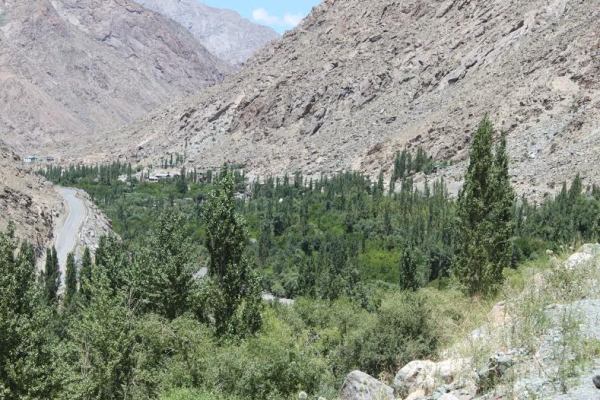By Anwar Ali Tsarpa
It usually happens that most of the planned trips remain mere surreal, and most of trips that took place are unplanned. So, I suggest, plan not just board. In such a sudden tour I reached Lucknow. Dawn was looming. I grabbed an auto to Hussain Gunj; a Muslim dominated area in Old Lucknow. Travelling in an auto at dawn was like sunny day after snowfall where even weak airstream carries small particles of snow, making the day cold. I strolled around to find a cup of tea to keep me warm to fight the morning chill weather. For a milk loaded, deep good quantity tea in Thakur Ganj the chai walla charged only 5 rupees that would have cost at least 10 in Delhi.
I put myself in an autorickshaw to my friend’s place. In a small autorickshaw four people bound to sit in place of three. Four were facing towards us with their back towards the driver; one each on the right and left of the driver. It was ten people in a rickshaw of three. One man, probably new like me in the city dared to speak in satire language, “Bhai’ya chaat khali hai” (Brother the rooftop is empty). Other passengers smiled; driver choose not to respond but starred. Memories of similar cases in Delhi clicked my mind. I was told by a friend, a resident of Batla House in Delhi, that the similar rickshaws in Delhi called the “Grameen Sewa”, and number of mini-buses that runs from Maharani Bagh to Abul Fazal, belongs to Pradhan of the area. Even the Phat Phat Sewa that runs from Jama Masjid to Batla House belongs to a rich man in Old Delhi. The owner has a daily turnover of five-six lakh from all source of income. Even the police “don’t dare to say anything” to them; “when the battery rickshaw banned in Delhi, rickshaw’s belonging to Pradhan were roaming freely”.
People in Lucknow wear dark clothes, sweater, mostly in different shades of grey, blue or brown. Due to harsh winter morning, they cover their head with a muffler from cheek to the upper side, opening face and back side of the head. After emergence of Delhi’s Chief Minister Arwind Kejriwal in politics he is portrayed as the icon man of this fashion, “The Muffler Man”. Women wear a scarf in pink, orange and rarely white.
I was reconnoitering the city of Nawabs. Most of the signboards in Lucknow are in Hindi. Now, most enterprises use both Hindi and English. Sigh Board of government offices is in dual language Hindi and Urdu. Names of some business units are as: Tathagat Yoga, Shri Sai Business, Agarwal Jewellers, Dastar Khan, Radhy Shyam Sweets, Gadha Bandar, Chappan Bhog etc. Lucknow which is considered to be the domicile place of Urdu seems to have disowned the language. The city known for its Nawabi culture and sweet flavour in language are now like a fairytale. Rare sigh boards would find in Urdu and few with Arabic “Al” (the) to articulate that the enterprise belongs to Muslim. Even on many places the combination of “Al” is wrong in grammatical terms.
The walls and pillars in the city are painted with graffiti paintings of Hindu Gods and Goddesses or leaders like Atal Bihari Vajpayee, Mahatma Gandhi; that I had not observed in my past tours to the city in 2016. On various chowk statue of leaders like Kashiram, Mayawati, Jyotiba Phule, Ambedkar, Nehru, Gandhi, Maharana Pratap etc. are erected. The whole city has hoardings of BJP leaders like Narendra Modi, Rajnath Singh, Yogi Adityanath, Akhilesh Yadav (BSP) etc. Even young youth leaders also have hanged huge hoardings all over the city that gives a peculiar look. One hoarding regarding the Babri Mosque that catches my attention was:
“Chalo Chalo Ayodhya:
Supreme court ka hai samman, Mandir hai is dash ka maan!
Hindu Muslim sab nay mana, Ram Mandir wah’in banana! – Sawpinal Singh”.
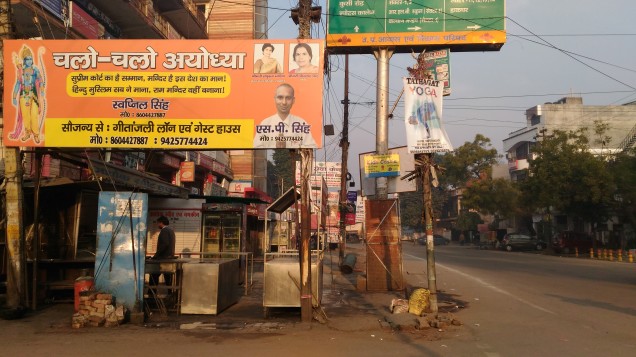
It remembered me the news reports that such hoardings had used in violence ridden Muzaffarnagar to ignite communal discord.
Due to receiving me as an uninvited guest at my friend’s place it took some time to prepare the breakfast. Thus, his father pushed a Hindi paper “Dainik Jagran” towards me. I have not that hold on comprehension in Hindi to read a newspaper. But I could read the headlines. From the front-page story, I came to know that as many as 10 lakh students of the 66 lakh-odd who registered for the Uttar Pradesh Board exams have skipped their papers in the first four days of the cycle, the highest in five years.
After having a roti with desi ghee, I went to ISKCON temple at Shaheed Path, Lucknow. They were celebrating the day (13 February) as the sixth anniversary of Bagwan’s entry on the place. According to the speaker inside, the temple established on the same day in 2013. His Divine Grace A. C. Bhaktivedanta Swami Prabhupada, Founder-Acharya of International Society for Krishna Consciousness (ISKCON), has the responsibility to broadcast Vedic knowledge in English medium. Abhay expound the Vedic conclusion that real freedom means liberation from the miseries of material life: birth, death, old age and disease, a state that can be permanently attained by awakening one’s pure love for God. One of the aims of the temple is to provide free food daily so that no one in the 10 km radius of the temple sleeps hungry.

Janeshwar Mishra Park falls on the way, operating in Gomti Nagar. The lust green park, lush freshness, water bodies, and silence remind me of summers in home-town Kargil. Claimed to be Asia’s largest park, it is made in memory of late politician Janeshwar Mishra Sharif Bhai from Samajwadi Party.

Developed with a cost of 168 crores, the park measures around 376 acres. Two large water bodies on the site have been developed with a view to harness migratory birds and provide a haven for birds in winter and summer months through the creation of lagoons and marshy lands. Due to the shift in government from Samajwadi to BJP the site has not fully developed as per the plan. The new government has also neglected the park; as a result, remained deserted from various necessary facilities. Due to unavailability of electric vehicles in such a huge park we were tired.
We landed our bums on the two-wheeler and moved the direction towards Lucknow’s popular “Tunday Kababi” at Kapoor Tala, Ali Ganj for dinner. Tunday Kabab, also known as Buffalo meat galouti kebab is a dish made out of minced meat. It incorporates 160 spices with other ingredients that include finely minced buffalo meat, plain yogurt, garam masala, grated ginger, crushed garlic, ground cardamom, powdered cloves, melted ghee, dried mint, small onions cut into rings, vinegar, sugar, lime. The restaurant embarked in 1905 is famous for serving buffalo meat galouti kebab. The restaurant was discontinued for a period when Yogi Adityanath government had banned buffalo kebabs after a crackdown on “illegal” slaughterhouses.
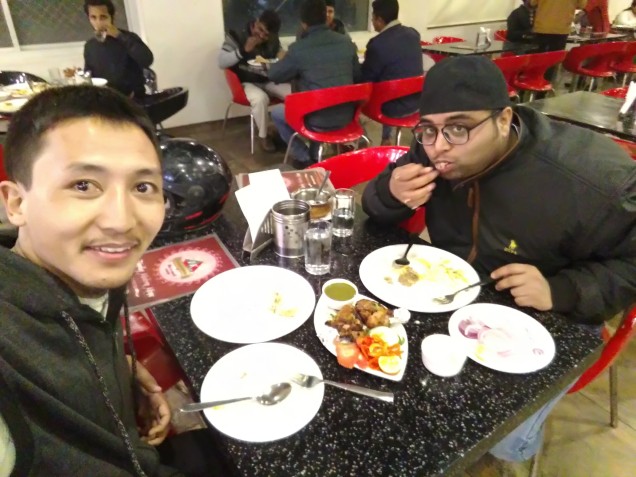
In the last week of March 2017, I was in Lucknow to present a research paper at a conference at Shakuntala University. I met my friend’s mom while returning from the conference. She said that “Beta, ab to Yogi ji ka raj hai. Ab to Ladkiyan daer raat tak goom sakte hai. Sab kuch accha hoga ab” (Son, its Yogi’s raj now. Now, ladies would be safe to roam late in the night. Everything will be fine). Today when I met her again, without poking her our last conversation I asked, how the Yogi is doing? She replied: “Kuch mat kaho, boht kharab hai; kuch b nhi badla” (Don’t talk, very disappointing. There is no development at all. Everything is in a mess). Then I reminded her of our last discourse. She immediately took a U-turn: “Beta, itna b kharab nhi hai!” (Son, it’s not that bad!”.
I had a feeling in the evening that I have seen a new image of Lucknow. Both ISCKON temple and Janeshwar Mishra Park are not part of old Lucknow’s Nawabi tahzeeb. During my past trip I had been to British Residency, Hazrat Ganj, Bada Imam Bada, Chota Imam Bada, Rumi Darwaza, Chattar Manzil, Begam Hazrat Mahal Park etc. Many of them are reflections of the Nawabi culture in Lucknow. The statues of freedom fighters on public places are icon of resistance. But at the same time statues and British colonial memorials in the Residency and in a small museum in Zoo are depicted in a heroic style. Is not this absurd and contradictory that both oppressors and the oppressed are in same line? This do not reflect the true face of history.
On the next day, we went to Amina Abad, an old market in Lucknow famous for its chiken embroidered garments. The Bazaar has operated since the time of Nawab of Awadh in the first half of 18th century. Now also, as the day breaks, the Aminabad market glittered with the sequins and colors of silk and muslin. Most customers are women. Beautiful black big eyes are the only part appears outside the Burqa of mostly women in Ameena Abad.
While returning, we gave a visit to Amir-ud-Daula Public Library situated between the lust green trees. The library has a collection of two lakh books on ancient Buddhist, Islamic and Hindu literature reflecting the true Lucknow’s tehzeeb under one roof. The Urdu section is in worse condition without proper order of the books. Termites also finish the dust loaded books. This is not the only place, similarly, Urdu literature in the 350-years-old Anglo-Arabic Secondary school library at Lahori Gate in Delhi is in worst condition.
To do away with tiredness Lucknow’s famous “Sharma Ji ka Chai” at Hazrat Ganj is the best choice. The first stall had installed in 1960; now have various branches in all over Lucknow. People stand even in a long queue to get a cup of tea with a potato loaded Samosa.
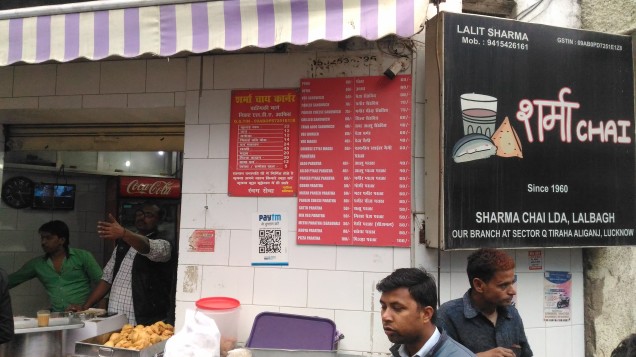
The day was 14 February, the much-hyped Valentine Day. But in Yogi’s Lucknow, my friend, who had seen past Valentines in the city, was surprised over the disappearance of red teddy bears and valentine gifts from the market. We could see the Anti-Romeo Dals (or squads) to “ensure the safety of college-going girls” and “check eve-teasing”. But youth experience of them are like Haddi in Kabab (Bone in Kabab). One joke that roaming around in murmuring voice in the city was that the establishment would say “Na karengay na karna dengay” (Neither I do, nor allow others to do).
At night I choose to stay in the room of one of my friends from Kargil. In a Hindu dominated area, where his college locates, he was refused to rent a room due to his Muslim identity and domicile state, that is Jammu and Kashmir. Finally, he got a small room through a reference. With the fear of sacking from the room, people cook chicken clandestinely, eat in close-door and throw bones in a far place.
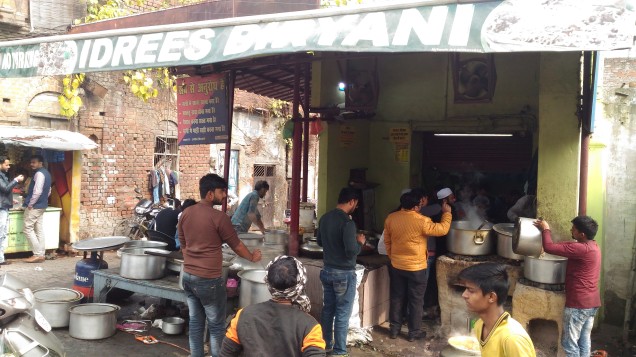
Next day lunch was what I had waited anxiously, “Idrees Biryani”. A mutton Biryani popular in Lucknow. You won’t regret to pay 120 rupees for a quarter-kilo Biryani. My Hindu friend was waiting while I had lunch. Then to take him lunch we went to another popular place called “Bombay Pav Bhaji”.
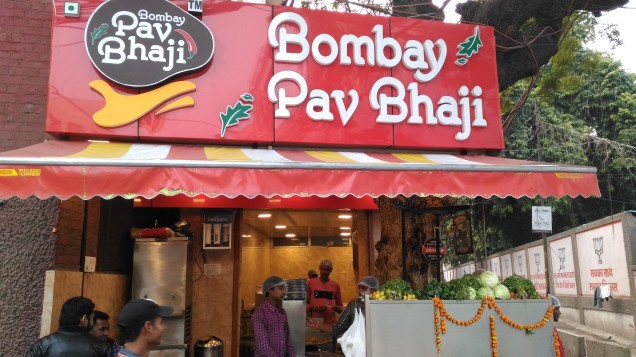
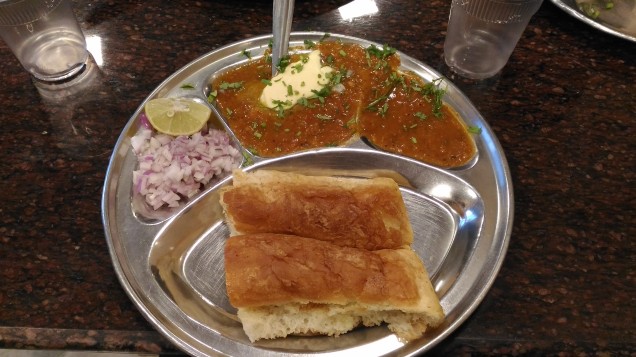
I waited for him to finish his food. When I returned from ISCKON temple his sister was astonishingly asking, do Anwar go to temple also? I offered my prayers even at his home. This is the coexistence and understanding of Hindus and Muslims in one part of Lucknow and there are others who permeate hatred on basis of religion. I came back with the question does Lucknow have two different guises: the radical jingoists and the moderate pluralists? Or is the city divided in Old and New Lucknow like the division of India and Bharat?
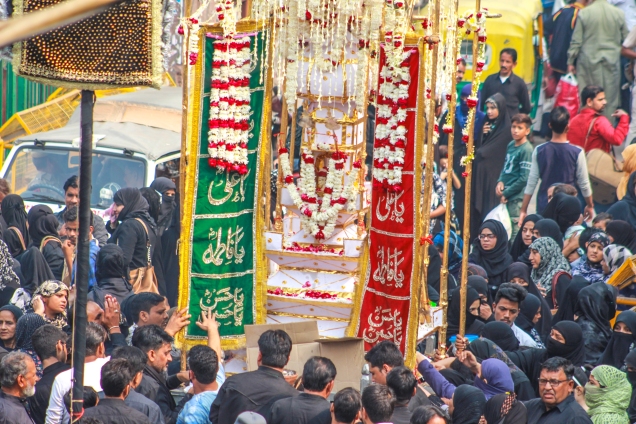








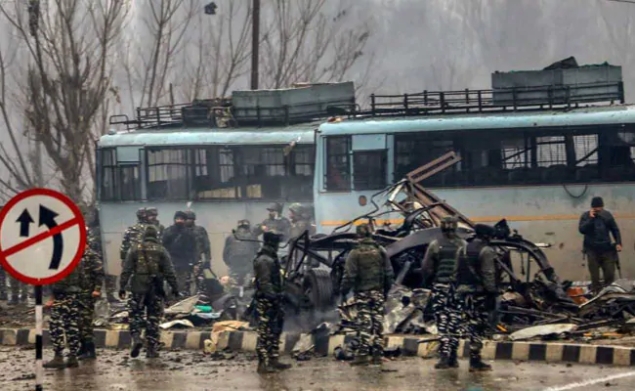
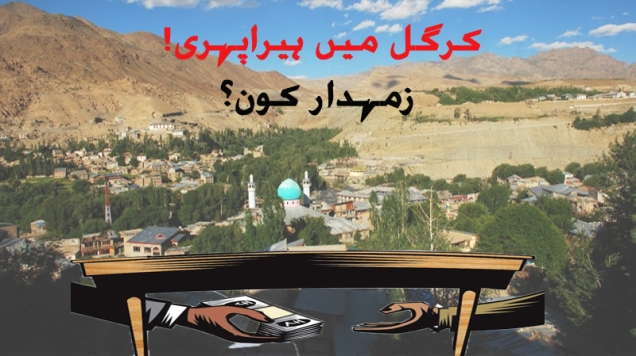
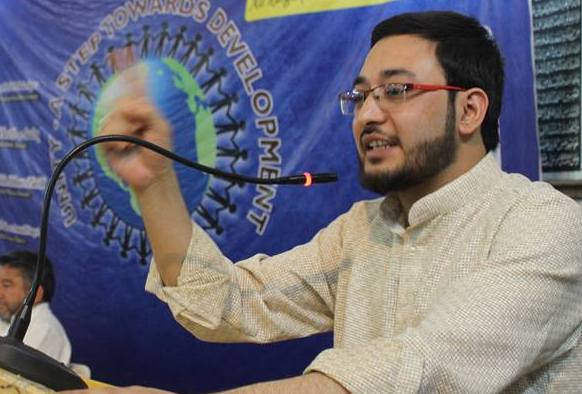
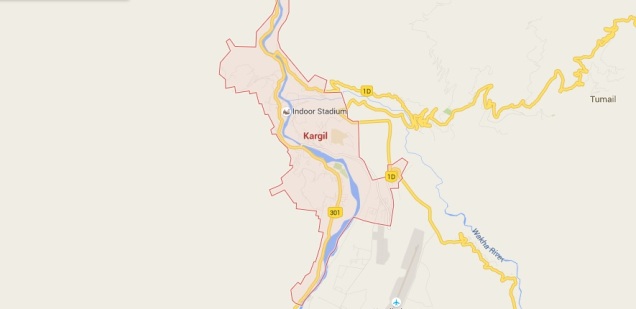

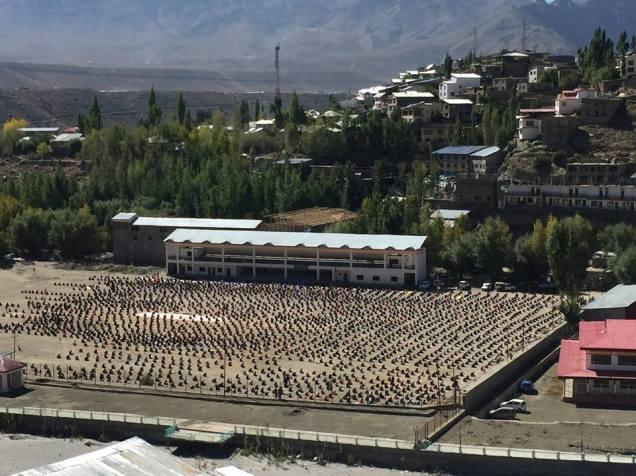
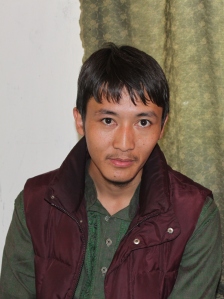 Due to clear sky in Kargil sometimes it happens that the Eid moon become visible in the day time. The Eid than is called “Toe-Eid”, the Mid Day Eid. This Eid is considered to be more elated, celebrating and enjoying as it bring the news of Eid very early.
Due to clear sky in Kargil sometimes it happens that the Eid moon become visible in the day time. The Eid than is called “Toe-Eid”, the Mid Day Eid. This Eid is considered to be more elated, celebrating and enjoying as it bring the news of Eid very early.